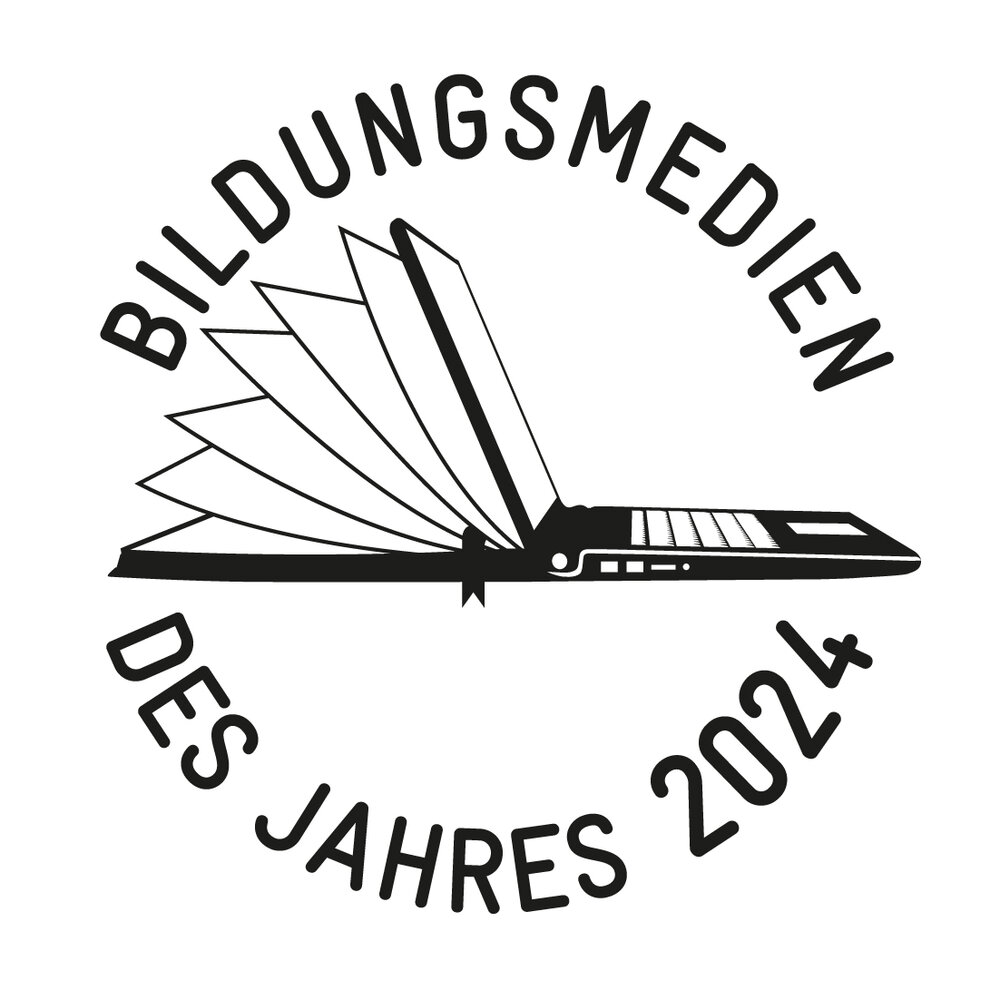SELECTION OF EDUCATIONAL MEDIA
The Process
The winning entries will be determined through a two-step process. A jury of experts reviews all submitted materials in each category. The specialist juries shortlist five titles per category, which are then submitted to the main jury for review. The main jury, to which the chairs of the specialist juries belong, selects three titles in each category and decides on the winning submission.
The Criteria
Didactic concept
The didactic concept behind educational media encompasses the design and structure of materials for teaching and learning and their objective of fulfilling educational goals and supporting the educational process. Educational media should demonstrate a coherent concept that addresses the central challenges of the respective subjects, takes current subject-specific findings into account and encourages the development of age-appropriate skills. Interactivity is an important factor, especially in the case of digital educational media: the didactic concept should provide opportunities to shape the learning process.
Subject-specific basis
The content must be factually accurate and the teaching material should reflect the current state of research. The jury are looking for a creative application of the topics and methods outlined in the curricula. Teaching materials that also achieve an interdisciplinary perspective will be viewed favourably.
Student orientation
It is important that teaching materials take the requirements, existing knowledge, and abilities of the students into account. Teaching content and methods should be adapted to suit the respective level and style of learning in order to ensure knowledge is effectively conveyed. It is important that the materials communicate the diversity of our society and encourage inclusivity.
Tasks and exercises
Tasks should be designed to promote the acquisition of subject-specific competences in an age-appropriate manner. They should also encourage independent thinking and learning and be geared towards different levels in order to allow differentiation. The materials should allow flexibility by providing differentiated exercises or additional resources for further research, for example.
Comprehensibility
A clearly structured textbook aids orientation within the subject material and helps organise knowledge. It is particularly important that texts are easily understandable, it is clear how the materials are to be used and that age-appropriate language is used.
Design
An attractive layout that conveys content in a clear format provides motivation to read and to learn. Interesting photographs, imaginative illustrations, and digital add-ons that have a clear connection with the text, provide alternative approaches to the topic and encourage reflection.
Interactivity and multimedia
Textbooks increasingly offer interactive and multimedia elements such as videos, audio files and online resources. These can enrich the learning experience and provide students with a range of possibilities to explore the material and expand their knowledge.
User friendliness
It should be possible to navigate the educational material easily and intuitively. A clear menu structure and well-placed navigation aids should make it easy for students to search for and access specific content. The ability to switch quickly between different sections or chapters improves the user experience.
Specific considerations for the submission of wholly digital educational media
Technical aspects
The technical functionality and stability of digital educational media play an important role. The jury will check whether platforms or applications function smoothly, provide a user-friendly interface and function on a range of devices and with different operating systems. The material should automatically adjust to different screen sizes and resolutions in order to be equally readable and useable on computers, tablets and smartphones. The availability of support services and tutorials is of additional benefit.
Accessibility
People with disabilities should also be able to access the digital educational material. The jury will, for example, note whether the media provides alternative text for images, subtitles for videos and other features to aid accessibility.
Evaluation and feedback
Digital educational materials should enable learning progress to be evaluated and feedback to be provided. This enables students to check their progress and performance and to make adjustments where necessary. Feedback from teachers and students, as well as from other users, will be considered in order to assess the quality and usability of the educational materials.
Data protection and security
Digital educational media must take data protection and security very seriously as it is important that students’ privacy is safeguarded and their personal information is protected from misuse or unauthorised access. The platforms or services should have appropriate safety measures in place to safeguard against unauthorised access or the manipulation or loss of saved data. This includes measures such as firewalls, regular updates, access controls and data backups. The transfer of data between the student and the platform or service should utilise secure encryption technology in order to guarantee the confidentiality of the information and to prevent access by third parties.
